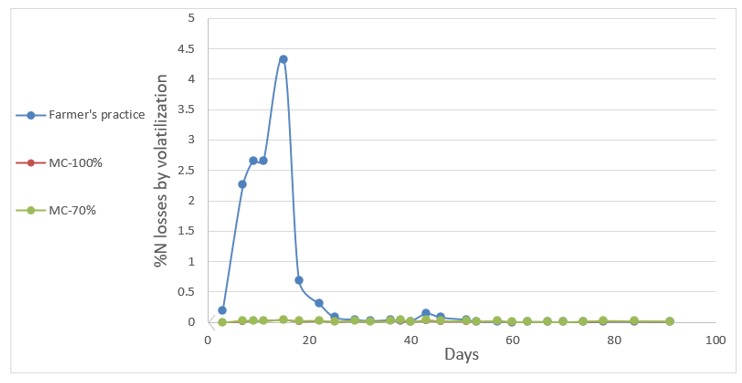Introduction
In recent decades, the concern about the negative environmental effects of excessive use of nitrogen fertilizers has increased. The main environmental problems caused by incorrect application of nitrogen fertilizers are groundwater pollution with nitrate, release of nitrogen oxides that contribute to the "greenhouse effect", and the pollution of the atmosphere with ammonia.
To prevent damage to the environment, "best management practices" (BMP) were defined for fertilizer application. In many cases, the BMPs are based on the "4R" rules that are promoted by IFA: "Right fertilizer source, at the Right rate, at the Right time, with the Right placement". Multicote is a controlled release fertilizer that releases its nutrients in line with the "4R" principles, since it releases nutrients directly to the root zone according to the plant's absorption capability, preventing the discharge of pollutants into the environment.
In this experiment, the rate of ammonia emissions to the atmosphere from traditional fertilizer application was compared to application using multicote. In addition, the multicote was applied in two rates to compare its efficiency to that of common fertilizers.
Materials and methods
The experiment was carried out in basil-growing pots. The control treatment of the common fertilization practice was compared to two levels of Multicote 4M 15-9-15 that were incorporated in the upper layer of the pot substrate (100% and 70% from the common practice). In each pot, an ammonia evaporation capture device was installed, and the daily amount of evaporation was measured.

Ammonia trap device: The trap device was placed near the basil plants. Into a half-open chamber that was made from PVC pipes, two polyethylene discs that were soaked in a solution of phosphoric acid with a concentration of 10% w/w were inserted.
The lower disc was used to absorb the volatilization from the fertilizers in the soil, and the upper disc was used to create a shield layer to avoid possible ammonia contamination from the surrounding air.


Results

Daily ammonia volatilization

Conclusion
- The ammonia volatilization in the two multicote applications was significantly lower than in the "Farmer's practice", therefore it can be a solution to cope with the environment pollution of nitrogen fertilization.
- In both CRF treatments, yields and root weight were higher than in the Farmer's practice. The yield of the Multicote - 100% was greater than the yield of the Multicote - 75%.
- Control-release fertilizer (CRF) enables better nutrient absorption and reduces nitrogen discharge to the environment compared to conventional fertilizer due to improved nutrient use efficiency.

